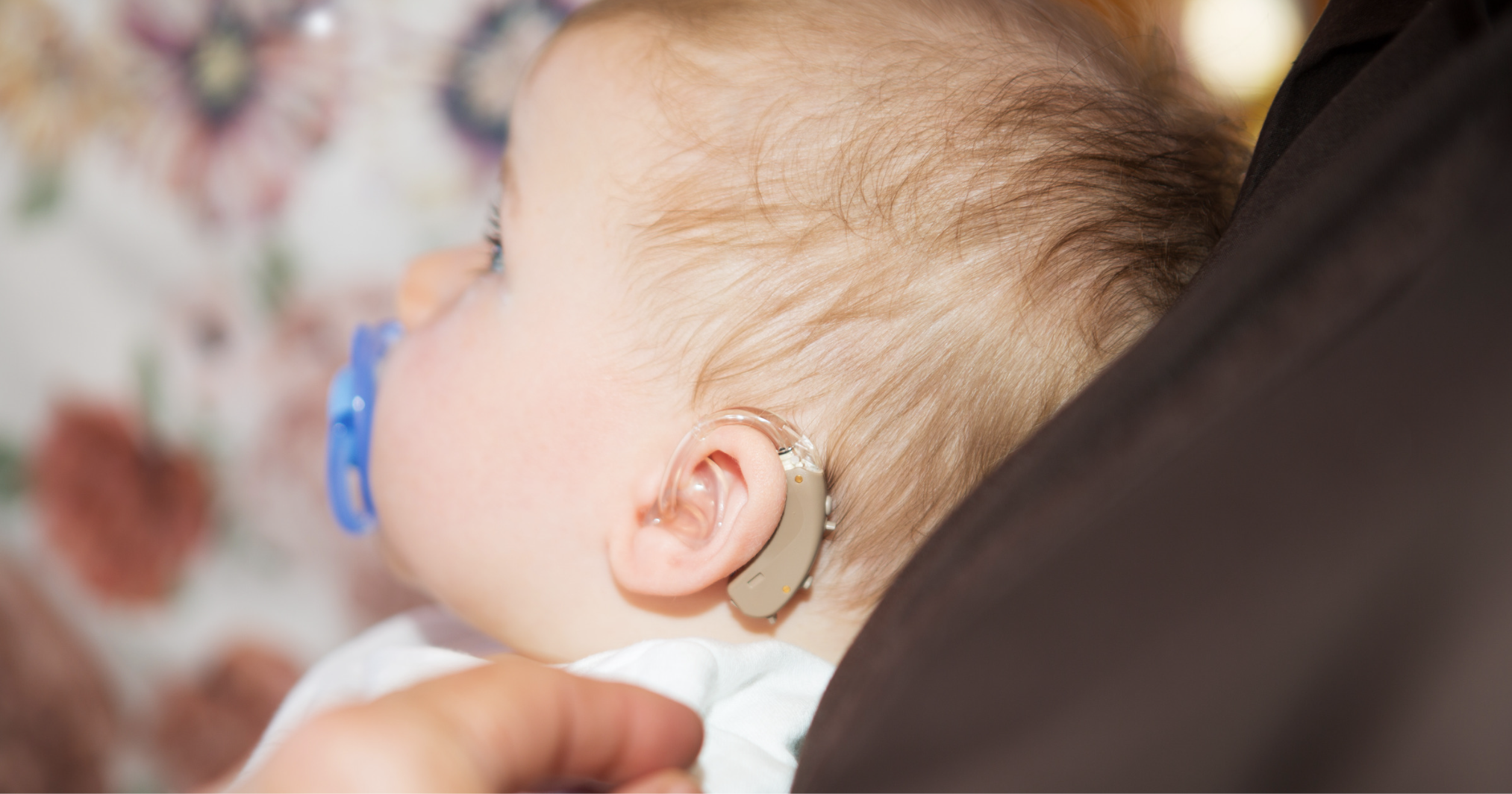October is Audiology Awareness Month, a national observance dedicated to advancing the profession through increasing public awareness of audiology. Audiologists play a critical role in the detection of hearing loss in children. While we do not know exactly how many children have hearing loss, data from the Centers for Disease Control and Prevention have shown that approximately one to three per 1,000 children have sensorineural hearing loss, which can affect their ability to develop speech, language and social skills. Research shows that early intervention can greatly improve a child’s development.
We sat down with Elyssa Sigurdson, AuD, and Jill Young, AuD, Doctors of Audiology at Pediatrix® Audiology of Northern Virginia and Inova Fairfax Medical Campus, to learn more about the unique role they play in caring for high-risk infants in the neonatal intensive care unit (NICU) and guiding families at the start of their child’s hearing-loss journey.
Early Hearing Detection and Intervention Guidelines
Pediatrix follows the American Academy of Pediatrics Early Hearing Detection and Intervention (EHDI) program’s 1-3-6 guidelines. Nearly all states mandate that every newborn have a newborn hearing screen to test for hearing loss by one month of age. If they fail, they should get a diagnostic hearing test with an audiologist by three months. If the diagnostic test shows sensorineural hearing loss, the child should have intervention by six months.
“We have a unique position in the field of audiology,” said Dr. Sigurdson. “We work in a large hospital with a 108-bed NICU and see a lot of micropreemies and infants born with genetic disorders. Certain NICU babies bypass the newborn hearing screen entirely and go straight to diagnostic audiology testing because they are so high risk for hearing loss.”
In young infants, hearing loss is identified using a non-automated auditory brainstem response (ABR) test. Drs. Sigurdson and Young review the waveforms and interpret the results themselves, determining whether a response is present, delayed, absent or subjectively inconclusive. While the newborn hearing screen reveals a pass/fail result, the non-automated ABR test identifies exactly why the baby fails. In addition to non-automated ABR measures, tympanometry testing is used to investigate middle-ear function and otoacoustic-emission testing is used to investigate cochlear function. Together, these tests help guide next steps.
“We can determine the degree and type of hearing loss at the bedside,” said Dr. Sigurdson. “The ABR test gives us threshold to reliably predict behavioral hearing abilities, allowing audiologists to fit hearing aids on very young infants.”Following diagnosis, early intervention is key. “When hearing loss in an infant is not identified at an early age, there are negative consequences, including delayed speech and language skills,” said Dr. Sigurdson. “If the goal is for a child to learn spoken language, they must have auditory access to speech from as early an age as possible. The auditory system needs to be stimulated early and often for maximum performance. Early identification and intervention are critical to improving long-term outcomes.”
Helping Parents Navigate Next Steps
While they are highly skilled in the technical aspect of their roles, Drs. Sigurdson and Young truly thrive at counseling parents on what is to come in a time of uncertainty and fear.
“It doesn’t occur to people who are having a baby to be worried about whether their child will have normal hearing or not,” said Dr. Sigurdson. “A lot of our time is spent with families who have an infant with hearing loss, explaining exactly what it means, what’s going to happen, what we’re going to do about it and what the next steps are. And really sitting with those parents and letting them have that space to grieve. Our job is to make sure that when we walk away from that family, those parents are feeling empowered on how to move forward from here.”
Being deaf herself, Dr. Young brings unique perspective when counseling families. “I definitely have empathy,” she said. “As an individual who lost her hearing at a young age, I can relate to being a kid with hearing loss. I hope that parents can see an audiologist with hearing loss and have some hope for their child in that hearing loss has not given them a poor prognosis.”
The child is referred to a pediatric otolaryngologist (ear, nose and throat physician) and an audiologist specialized in fitting cochlear implants and hearing aids. Drs. Sigurdson and Young additionally recommended that the child see a pediatric ophthalmologist, cardiologist and neurologist (depending on the type of hearing loss), as well as have Cytomegalovirus (CMV) testing (as congenital CMV increases the risk for hearing loss), genetic testing (as finding hearing loss can also lead to other diagnoses) and imaging performed.
Parents are also connected with state-provided early intervention services, where they learn about the communication modes available to their child. “Generally, there are four,” said Dr. Young. “There is raising a child orally with their ears, which is called Listening and Spoken Language; there is American Sign Language; there is Cued Speech, which is another visual form of language that involves lip reading and hand signals; and there is Total Communication, which is a combination of oral and sign language.”
Dr. Young notes that when a child is found to be deaf, parents always have the option not to treat it. “While cochlear implants and hearing aids are great, if you have a child that isn’t benefitting from that or needs something besides oral access to sound, it’s OK to give children visual access to communication.”
Learn more about our comprehensive scope of neonatal services >>
